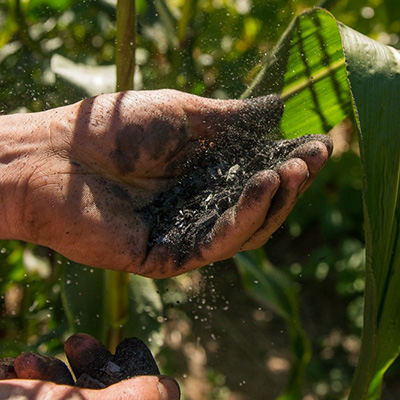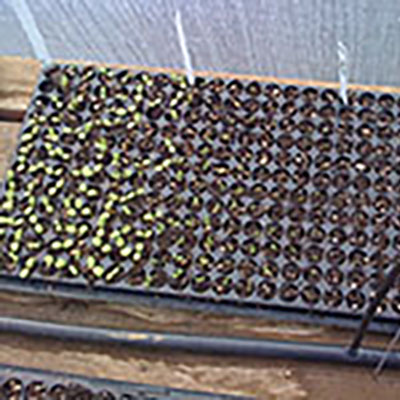This is the first of two articles about biochar, the term for charcoal when it is used as a soil amendment. This article details the author’s involvement in an on-farm study of biochar. The second part, explaining his method for making it, will be in the January 2018 Growing for Market.
As a young farmer, my interest in agriculture has developed during the years that scientists have come to understand more and more about the weather variation challenges we will face in the age of a changing climate. The very notion of seasons as we know them may become a thing of the past. How we create resilient environments for our plants to help them withstand these environmental stresses will be central to the question of how we feed ourselves in the coming decades. The Intergovernmental Panel on Climate Change estimates that these factors could result in a 17% crop reduction from current global rates by the year 2100, when the world’s population is estimated to be 11 billion people.
Carbon, the element that is most significantly altering the atmosphere, is also the most essential ingredient in creating resilient soil. A farm mentor, Steve Bensel, told me that it was only after he had farmed for 25 years that he realized everything he did for organic growing—composting, cover cropping, animal manures—were all part of the carbon cycle. As the fuel source for soil microbiology, carbon is responsible for microbes’ ability to digest and make nutrients accessible to plant roots. Take carbon away and we are left with less organic matter, resulting in greater water evaporation, nutrient leaching, and sterile soils. And this is happening. The Ohio State University Carbon Management and Sequestration Center estimates that 50-70% of the worlds agricultural carbon has been lost, turned into carbon dioxide on exposure to air.
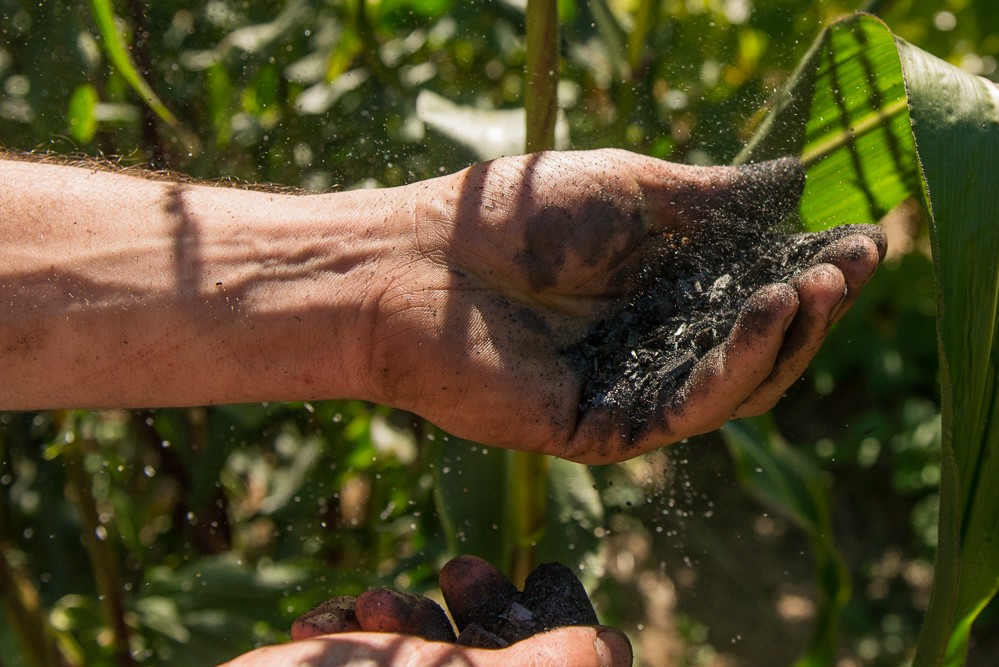
Charcoal is a naturally occurring form of carbon. Charcoal is a byproduct of burned ecosystems such as forests and prairies that captures the carbon in plant matter and preserves it in a form that can stay in the soil for between several hundred and 10,000 years. Known as recalcitrant carbon, charcoal captures organic matter in its pores, creating areas of “concentrated labile carbon,” which is the most accessible form of carbon for the microbial community. In addition, charcoal can capture nutrients and water, supplying a broad array of fertility needs for plants. Biochar is what charcoal is called when used for agricultural purposes.
What scientists still don’t know is how long these benefits last. There are a limited number of long-term biochar research projects occurring globally, and even the longer trials only provide a window into its influence 3-5 years after charcoal is applied, not the duration of it’s resonance in soil of up to 10,000 years. Yet there are numerous global examples illustrating that charcoal’s benefits in soil may increase over time. The most commonly known example are the soils of Terra Preta de Indio in the Amazon, considered some of the most fertile land in the world, which contain large amounts of charcoal dating back over 4,000 years.
Historians and anthropologists are finding that charcoal was used historically throughout the world, in Japan, Greece, Rome, Africa, Europe and throughout the Americas. Even the small island where I live and farm off the coast of Washington State has a series of old camas gardens, cultivated by the Salish tribes by burning, that are the most fertile soils in our archipelago. The significance of these soils goes far beyond anthropological; indeed pointing to the possibility that biochar could become a long-term investment in soil health. If charcoal does indeed continue to hold and build fertility for thousands of years it could become an aid in our growing food security crisis.
Biochar has been met with a good deal of skepticism by both farmers and scientists. Some research has validated this notion, illustrating no or slight differences in soil nutrient retention. Yet other research has provided extremely significant results. Dr. Xiaoyu Liu and a series of other researchers published a meta-analysis paper examining 238 studies of biochar’s influence on plant productivity. They found that vegetables increased by an average of 28.6%, and that legume crops, such as peas, beans, and vetch, increased productivity by an average of 30.3%. A significant amount of the production increase can be attributed to the increased carbon levels, which in turn promote growing rates of microbiology. An analysis done by Dr. Humin Zhou et al. in 2017 found that biochar increased microbial biomass carbon an average of 26% from 413 academic research papers.
The San Juan study
Back in 2012 I started clearing raw forest to develop a farm. What I found was more biomass on the ground than I could imagine. Knowing only a bit about biochar, I contacted a professor in my areas that I found was an international expert on the subject, Dr. Tom DeLuca. Tom spent almost 90 minutes we me on a rainy Friday night in his office at the University of Washington talking to me about the nature of his research over the past 25 years.
I asked him what areas of research in the field of biochar still needed more examination. Tom told me that the vast majority of biochar research was being conducted in labs or in potted plants in green houses. True field research, in working farm soils, was extremely limited. More importantly, long-term field research was almost non-existent. We decided that night to try and put together a long-term farm research project on biochar in the San Juan Islands of Washington State where I live.
Today, a research team from the University of Washington and the University of Montana are in their third year conducting research trials on biochar with farmers in San Juan County. The first year I coordinated with 10 farms on San Juan, Orcas, and Waldron Island to replicate the same study across all sites. The second year we pared the number of farm sites down to 6. Simulating the same study across a significant number of farm locations, all with different soil types, offered an opportunity to provide statistically significant findings if the same results held true across all the farm sites.
That spring, two years after I had begun clearing the forest, I made the charcoal for the study using the mountains of branches and small diameter logs that I couldn’t use for milling. After experimenting with many biochar burn styles, like the top lit updraft, the retort, and the top lit open burn, my farming mentors Steve and Linnea Bensel introduced me to the cylinder burn method. Owners of Nootka Rose Farm, a space they developed from the forest 40 years before, the two had come across a method from Australia by a man named Henry Moxum that used an open metal cylinder to create charcoal. As charcoal is generated in low-oxygen environments, the concept that it could be generated in an open container puzzled me. All the other methods I had used involved a closed top.
Steve explained to me that the fire itself works as a barrier for oxygen to access the coals in the bottom. As the fire rises when new material is added, the coals on the bottom turn to charcoal as the fire consumes the oxygen that would enter below. Steve gave me a cylinder five feet in diameter and five feet tall that he cut from an old water tank. Not only did this method require significantly less metal work than the other models, the open top also allows the producer to keep adding material throughout the burn process, resulting in a much larger amount of charcoal at the end. After my fourth burn with the cylinder I already created more biochar than I had in the two years before.
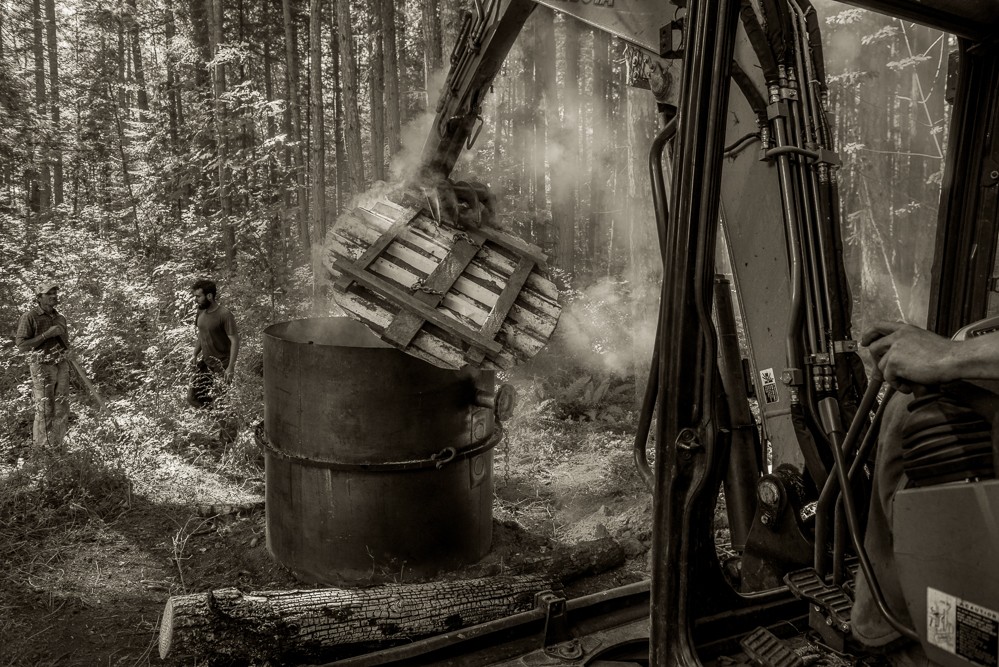
For years one and two of the study, the university research team came out three times each growing season to sample the soil from the plots we had laid out with charcoal from the cylinder burn in the spring. The study looked at four different types of plots. The first was a true control, with nothing added beyond what the farmers would already do to amend their soil. The second plot had an addition of a poultry manure based fertilizer, the third plot had charcoal, and the fourth plot had charcoal that had been mixed with the same amount of poultry manure that was added to the second plot.
The goal of this layout was to understand what influence raw charcoal would provide compared to the “charged” biochar, which had been mixed with manure. By comparing the control (plot one) with raw charcoal (plot three) we would learn the influence of untreated biochar. Similarly, by comparing the fertilizer addition plot (plot two) with the charged biochar (plot four) we would learn the influence of biochar mixed with fertilizer. Then, by comparing the uncharged biochar in plot three with the charged biochar in plot four, we would learn how important fertilizer addition is to biochar before application.
The study variables we were tracking came from sitting around the dinner table with Steve and Linnea discussing the elements they most cared about regarding their market garden. The first issue was soil carbon. Understanding that so many of the organic techniques they had practiced for years were all about the carbon cycle, they wanted to know if biochar could help them hold and build carbon in their soils.
The second issue was biochar’s influence on the biological system in the soil. If biochar was increasing soil carbon, what was this carbon’s influence on microbiology, and how did this biology influence the minerals available in the soil?
The third issue was nutrient retention. Living on a remote island, where importing fertilizer is both costly and time consuming, they saw a direct link between lower inputs and lowering expenses.
The fourth issue was water. With irrigation becoming limited in the mid to late summer due to the flow rate in their well, they wanted to know if biochar could make their existing water go further.
Lastly, both Steve and Linnea were interested in the increasingly popular concept of nutrient density. If biochar was holding more nutrients in the soil, and increasing the biology that made these nutrients available, did this lead to an increase in the minerals contained in the food itself? In essence, did biochar make for healthier food?
Carbon and soil biology
The study found a 35-45% increase in soil carbon level for the biochar plots, and an additional 35-40% increase with the charged biochar over the first two years. The majority of this carbon addition is in a stable or “recalcitrant” form, meaning that it is not bioavailable. But this recalcitrant carbon captures plant available carbon, called “labile carbon.” While the study was not able to dissect the percentages of recalcitrant carbon to labile carbon, the study was able to quantify the increase in overall microbial activity due to the increases in plant available carbon. The team found a 35-45% increase in total microbial biomass carbon with the raw charcoal in comparison to the control, and an additional 35% increase with the charged biochar in 2015 and 2016. The study also examined overall enzyme activity in 2016, the active agents microbes use to make minerals available to plants, which increased by 24% for biochar, and 28% for charged biochar.
This increased enzyme activity in the soil works for plants in a similar manner to us taking a probiotic. Increasing the health of our intestinal flora increases the amount of nutrients our bodies can absorb from the food we eat. In soil, this process is called “mineralization,” the digestive process of getting nutrients from broken down organic matter and rock by microbes. With more active biology, plant roots can uptake nutrients in larger quantities.
The team was able to quantify the mineralization of the two most essential macronutrients, nitrogen and phosphorus. Nitrogen is the key component in chlorophyll, which is responsible for how plants absorb light and nutrients from the atmosphere. Phosphorus is responsible for how that energy is transferred throughout the plant. Think of nitrogen as electricity and phosphorus as the wires that move that electricity around. Phosphorus also has several other key roles, such as being responsible for cell division, allowing plants to adapt to different environmental conditions, and serving as a central agent in the flowering and budding process.
While there are many types of nitrogen, scientists are increasingly examining potentially mineralized nitrogen because it indicates the nitrogen that has been broken down by microorganisms to be most available for roots. The San Juan County study in 2016 found a 65% increase in potentially mineralized nitrogen from the biochar only plots in comparison to the control plots, and a 63% increase from the charged biochar compared to the fertilizer only plots.
In the 2015 San Juan study, when the farms grew dry beans, the team saw a significant rise in plant available phosphorus, from the biochar plots compared to the control plots (35% increase), but little change comparing the poultry litter to the charged biochar plots.
In 2016, when the farmers grew winter squash, the team found opposite results, with almost no change in the biochar plots, but a 160% increase in the charged biochar plots in comparison to the fertilized plots. This illustrates how charcoal interacts with different crops and seasonal climatic patterns in unique ways.
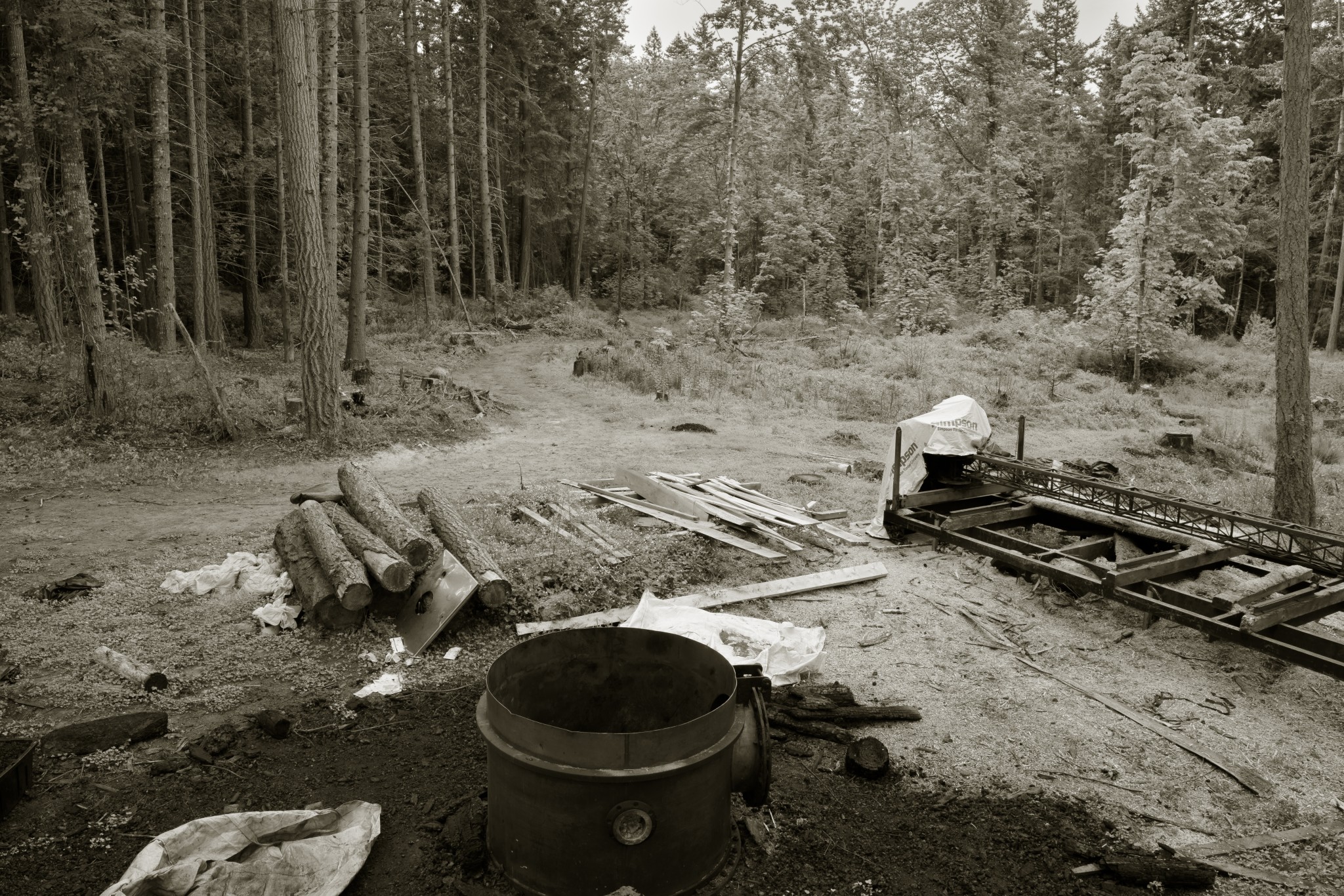
Nutrient leaching
Nutrient leaching is a problem not only for the soil but also our water systems. We want to keep nitrogen where it belongs - in the topsoil - and out of our streams, lakes, aquifers, rivers, and oceans where it grows excessive algae, disrupting aquatic ecosystems. In 2016 for the San Juan study we found a decrease of 13% and 33% of ammonium nitrogen runoff in the biochar and charged biochar plots respectively.
Water
In the age of climate change water is becoming ever more valuable. Water is not only a limited resource; it also costs increasingly more to access. Charcoal absorbs water and disperses it slowly into the soil, reducing evaporation. The San Juan studies found increased water holding capacity of 5% - 20% in the biochar plots, and 13% - 18% in the charged biochar plots.
Yield
The research team found an average 28% increase in crop yield of winter squash when biochar was applied to soils as opposed to the control plot, and an additional 13% increase with charged biochar.
Nutrient Density
Building our bodies with nutrients is why we eat, and not all food is created equal. Even organic, local food can still have a wide range of nutritional value depending on the quality of the soil the food is grown in. The study in 2015 compared the nutrient content of the beans grown for the study to dry beans purchased in Seattle. The study found an increase of micronutrients in the locally grown beans with charcoal as opposed to the control. And the store bought beans, they came in last.
Further information on the San Juan biochar research trials can be found in published papers in Agriculture, Ecosystems & Environment and Biogeochemistry.
Potential and production
There is still a lot we do not know about biochar. Research papers find differing results, and we have come to find that different types of charcoal, made with different woody feedstocks and temperatures, will create products that interact with soil types in varying ways. To take biochar as a silver bullet for increasing soil fertility does not recognize the nuance and range of research continuing to be published on the subject.
That said, the implications of what biochar might be cannot be ignored as we move into increasing challenges with food scarcity. The term “sustainable” agriculture gets thrown around a lot these days, but what it actually means is whether future generations will have food to eat. If the United Nations and Ohio State Carbon Center are correct, we are looking at severely increasing challenges in food production due to the climactic stresses of climate change as we move into the future. The gas that agriculture is emitting into our atmosphere that is further changing our climate—carbon—is simultaneously the element most essential to creating nutrient, water, and biologically rich soil. If we lose our carbon, we lose the soil structure that creates nutrient rich foods, foods that build our bodies with the minerals we need for optimal health.
Biochar is by no means the solution to this problem. But it may be a part of the answer. Biochar is, first and foremost, 60-80% pure carbon, carbon that existed before in the plant tissue and is then preserved in the soil and kept from the atmosphere. Once it is a part of the soil, it gathers labile carbon—the central agent in biological development—along with nutrients and water to create a foundational base for soil health. With healthier soil may very well come healthier, more nutrient-rich people. And as a one-time application, this benefit may continue for millennia, an investment in the food system of future generations as our climate comes to change more and more.
Since I started clearing land over four years ago, I have made the equivalent of nearly $60,000 worth of biochar, if I were to buy it on the open market, by modifying the way I conducted my burn piles. Biochar production can be low-cost and efficient, helping you process material that you would otherwise turn into smoke and ash. Instead you create a product that will last in the soil, either on your farm or for a customer. Biochar production will be outlined in an article early next year in Growing for Market, or you can watch the production tutorial at restorechar.org.
Kai Hoffman-Krull runs a market garden with his wife Sarah on Waldron Island, located in the San Juans off the coast of Washington State. Starting with raw forested land four years ago, they integrate vegetable and fruit cultivation with wild foraging to supply their farmers market stand and restaurant accounts on neighboring islands. Kai studied soil science at the Yale Farm and Forestry School, and served as a manager of the Yale Farm from 2010-2012. He spends most of his current days developing the farmstead’s water system, building structures, and knowing he should care more about weeding.


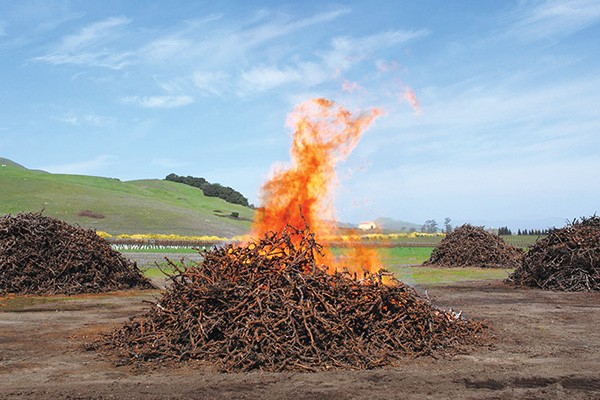 There is, with all of us, a lens through which we see the world. And while each of ours is different—informed by our past, by our present, where we have come from—a common lens we can all share is the recognition that our globe is changing.
There is, with all of us, a lens through which we see the world. And while each of ours is different—informed by our past, by our present, where we have come from—a common lens we can all share is the recognition that our globe is changing. 
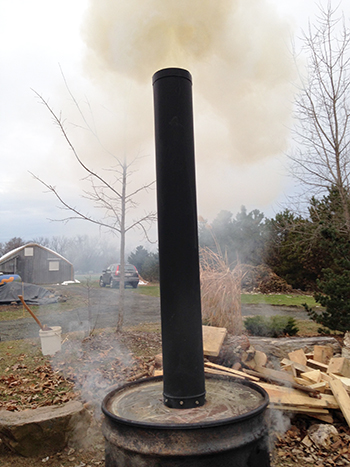 The impacts of climate chaos on Astarte Farm have forced us to look for solutions that provide increased long-term resilience in our soil systems, and biochar has shown good promise in moving us toward that goal. Biochar is a paradoxical substance. It is both an ancient agricultural practice developed thousands of years ago in the Amazonian Basin, and at the same time a relatively new approach to enhancing and stabilizing soil fertility.
The impacts of climate chaos on Astarte Farm have forced us to look for solutions that provide increased long-term resilience in our soil systems, and biochar has shown good promise in moving us toward that goal. Biochar is a paradoxical substance. It is both an ancient agricultural practice developed thousands of years ago in the Amazonian Basin, and at the same time a relatively new approach to enhancing and stabilizing soil fertility.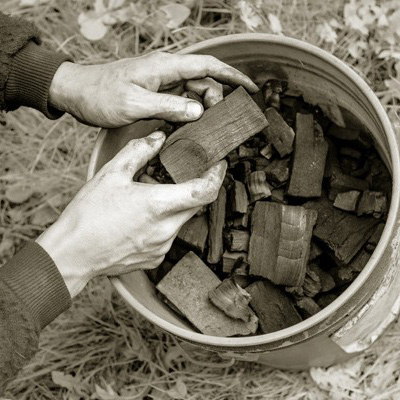
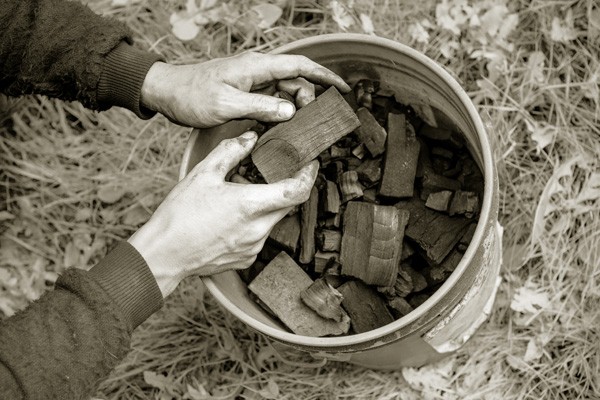 This is the second of two articles about biochar, the term for charcoal when it is used as a soil amendment. For the first article, detailing the author’s involvement in an on-farm study of biochar from the October 2017 GFM,
This is the second of two articles about biochar, the term for charcoal when it is used as a soil amendment. For the first article, detailing the author’s involvement in an on-farm study of biochar from the October 2017 GFM, 